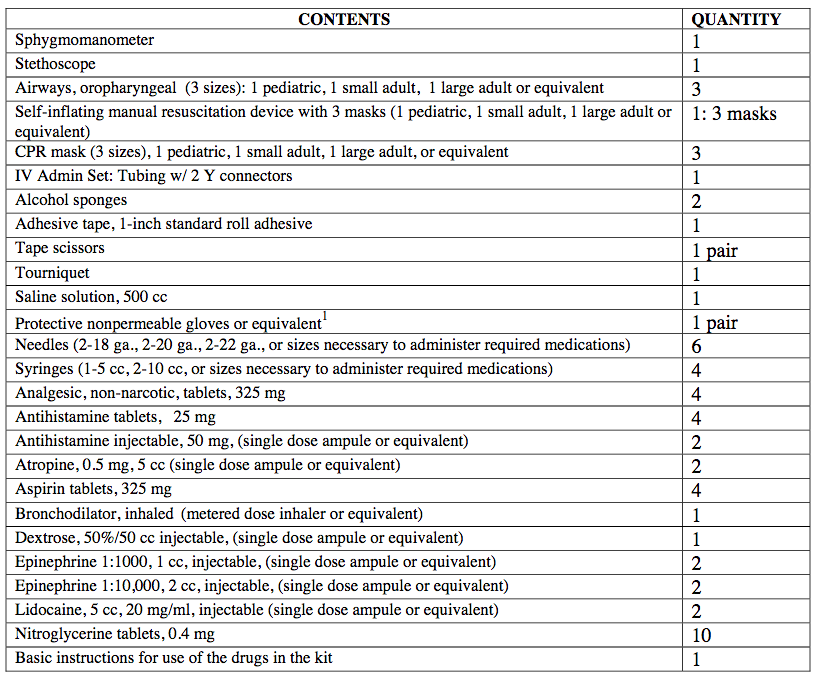Since 1986, the FAA has required that every domestic passenger-carrying airplane with a flight attendant must have an onboard emergency medical kit that has a variety of medications and supplies.
Unfortunately, few, if any of these supplies are appropriate for childrens’ usage, according to a recent study.
Along with at least one approved AED that’s legally marketed in the United States in accordance with the Food and Drug Administration (FDA) requirements, the current minimum requirements for a plane’s Emergency Medical Kit:

Source: www.faa.gov
Unfortunately, except for the few items are specified as pediatric sized, very few of the things in the medical emergency kit could be used for or given to children experiencing a medical emergency.
Duke Health reports that researchers there did a first-time-ever study: 11,000 instances on 77 international airlines in which children required emergency medical attention, covering a period between January 2015 and October 2016, and frankly, their conclusions were pretty disturbing:
The most common of medical events among kids were the same ones that usually lead to pediatric emergency room visits – nausea and vomiting (33.9%), fever or chills (22.2%), acute allergic reaction (5.5%), abdominal pain (4.7%) and stomach flu (4.5%).
Unfortunately, there was little likelihood that the airline would have a remedy on hand that was appropriate for a child. For example, the FAA requires U.S. airlines to have well-stocked first-aid kits that include an asthma inhaler (but without spacers, so inappropriate for children who don’t know how to use a regular inhaler), medication for anaphylaxis (but they only have adult doses), and aspirin (but it’s not recommended to give children aspirin due to the risk of Reye’s syndrome, plus they’re in pill form, which many young kids can’t swallow, AND they’re only available in adult dosages). In fact, there are virtually no medications in the medical emergency kit that would be appropriate for a younger child, yet according to the study, children represent almost 16% of medical emergencies on planes, so not an insignificant amount.
According to Duke Health, Congress passed a law in 2018 that directed the FAA to assess whether onboard first-aid kits have the minimum contents to meet the needs of children. But Alexandre Rotta, chief of the Division of Pediatric Critical Care Medicine at Duke University School of Medicine and lead author of the Duke study, suggested the research team’s analysis should provide a shopping list for stocking airline first-aid kits.
“This is needed information to help inform discussion and policies affecting children on airlines and what should be included in the on-board medical kits,” said Rotta. “But for right now, if you are a parent traveling with a child, we recommend you carry on the medications you think your child might need.”
Like this post? Please share it! We have plenty more just like it and would love if you decided to hang around and clicked the button on the top (if you’re on your computer) or the bottom (if you’re on your phone/tablet) of this page to follow our blog and get emailed notifications of when we post (it’s usually just two or three times a day). Or maybe you’d like to join our Facebook group, where we talk and ask questions about travel (including Disney parks), creative ways to earn frequent flyer miles and hotel points, how to save money on or for your trips, get access to travel articles you may not see otherwise, etc. Whether you’ve read our posts before or this is the first time you’re stopping by, we’re really glad you’re here and hope you come back to visit again!
This post first appeared on Your Mileage May Vary
